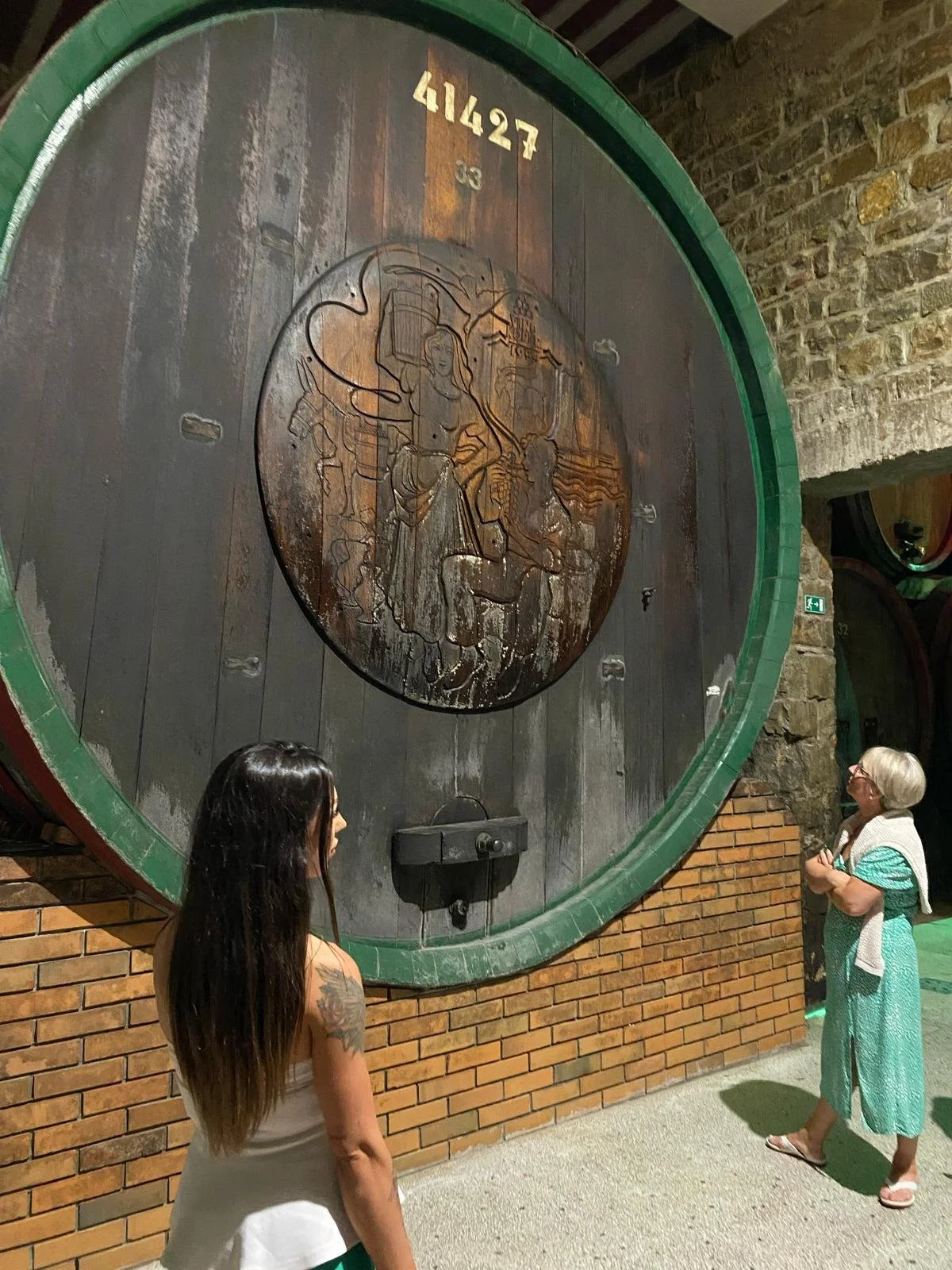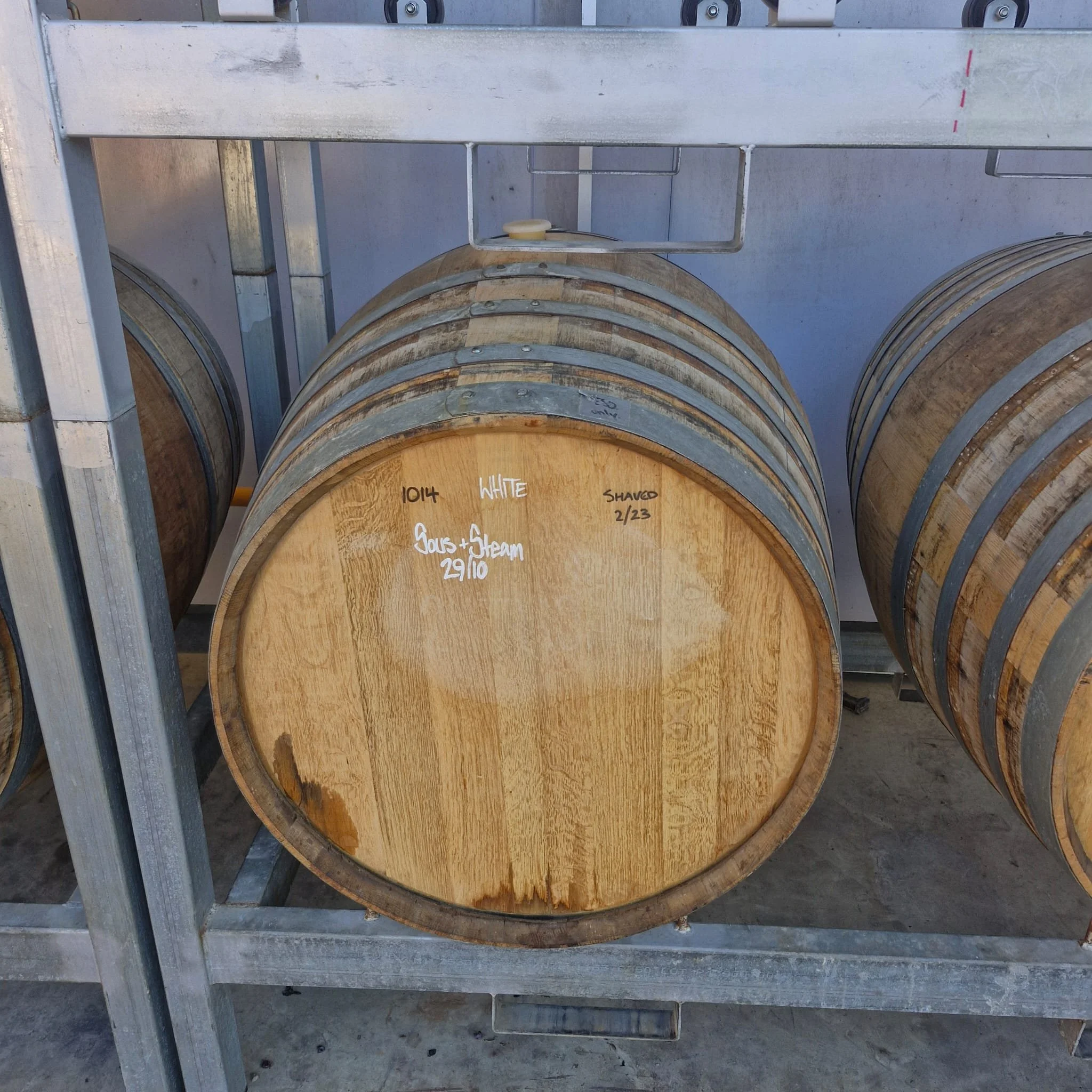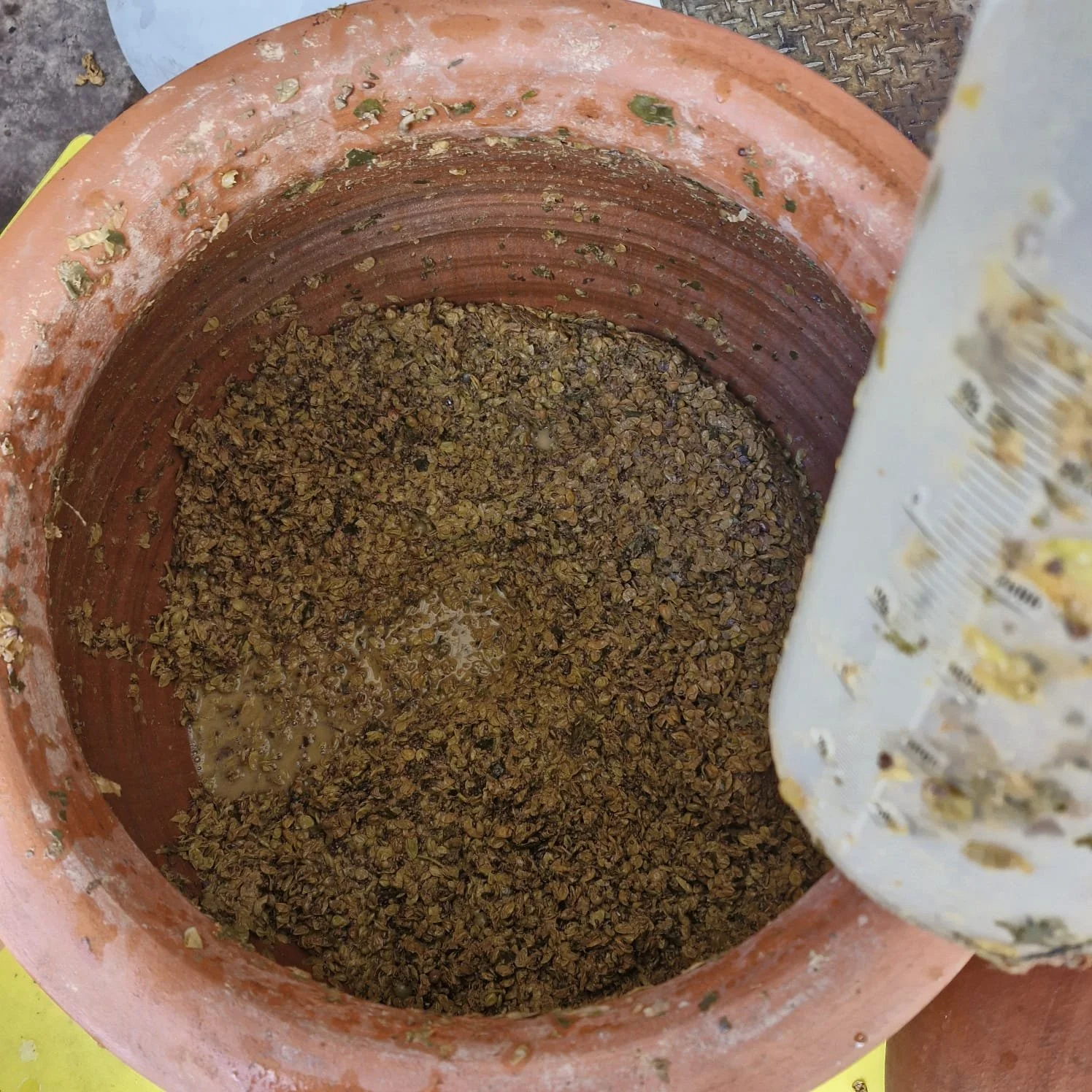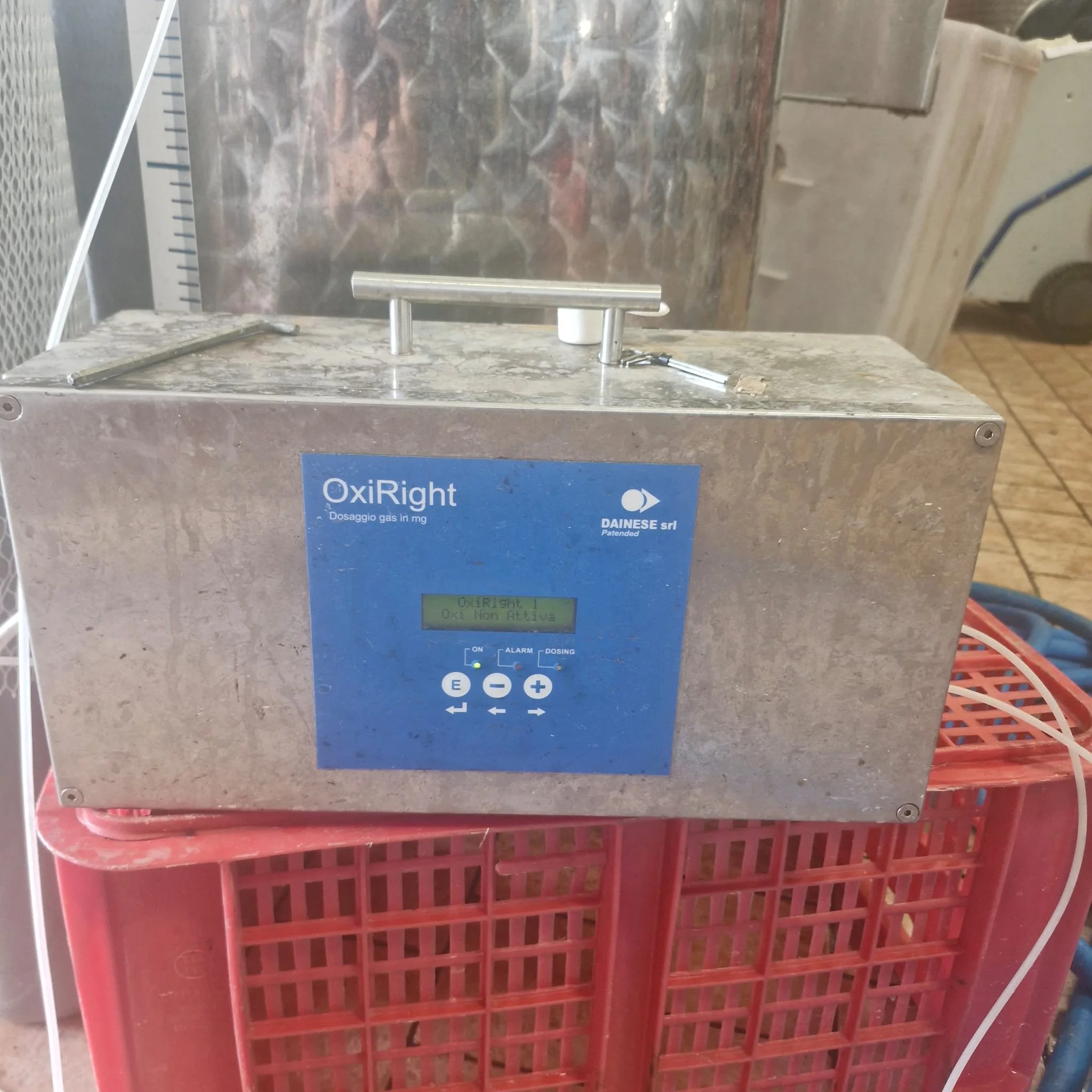it takes a vessel to raise a wine
Choosing how to mature a wine is one of the most important decisions you will have to make. Harvest is exciting with lots of microdecisions, the opportunity to taste multiple times per day and subtly adjust decisions to target the style you want, but after that comes the quiet part that can really define how the wine will turn out and it can be damaging to change your mind so it’s important to get it right first time.
The French call this stage élevage, which translates to “raising” or “bringing up.” Making wine is a lot of fun 😉 but raising the child into something balanced, stable and mature is where it often goes wrong.
How we “raise” a wine - the vessel we put it in, the oxygen and air it’s exposed to, the time we give it shapes tannin structure and aroma development and is crucial to longevity. With many interesting exceptions, the choice is often between oak or stainless steel, old or new, but it’s really about oxygen, pore size and vessel shape.
time for Pores
It’s easy to associate oak with the flavour it imparts, though that’s really only true for newer barrels. The real difference lies in the pores of the wood.
Oak is porous. Its microscopic structure allows tiny but continuous amounts of oxygen to pass through. It softens tannins, stabilises colour, and lets the fruit and aroma evolve. In the right dose, oxygen turns sharp angles into curves.
Stainless steel, on the other hand, is completely airtight. It doesn’t breathe at all. The wine inside remains almost perfectly protected from oxygen. That makes it ideal for freshness - bright fruit, pure aromatics - but it will take longer to mellow tough tannins and build complexity.
The rate of oxygen transfer through oak depends on the grain and thickness of the staves, the tightness of the cooperage, and the barrel’s age. A new French barrique might allow around 20–40 mg of oxygen per litre per year to enter, while a well-used barrel allows less than half that. Those few milligrams might sound small, but they’re enough to transform a red wine’s chemistry over time.
When oxygen diffuses into wine (even at trace levels), it sets off a cascade of chemical reactions that transform phenolics, colour compounds, and aroma precursors. First, oxygen interacts with trace metals (Fe, Cu) to form hydrogen peroxide, which then oxidises ethanol into acetaldehyde. That acetaldehyde acts like a molecular bridge: it helps link anthocyanins and tannin subunits into larger, more stable polymeric pigments. At the same time, small phenolic units (monomers, oligomers) become more reactive, encouraging even more polymerisation. Over time these larger molecules - less astringent and more colloidally stable - settle out or integrate into the wine, softening mouthfeel while stabilising colour. Be careful though, wines exposed to lower oxygen regimes will end up with more highly polymerised phenolics and denser polymeric pigment content than those that are over-oxygenated.
I’ll always remember tasting barrel samples with Julian at Darcie Kent - a winery that really loves its oak. Even when the new barrels were giving intense vanilla, Julian was focused entirely on how the fruit and tannin were developing. The flavour was secondary; he almost didn’t register it. I found that interesting.
For a tannic, high-acid variety like Nebbiolo, those slow breaths of air are everything. Oxygen polymerises tannins, turning them from rasping to silken. It’s the difference between a wine that feels angular and one that glides. Gian Luca is fairly certain with his view that Nebbiolo needs oak. I don’t think it’s always that cut and dried, but all of his Nebbiolos will see oak and the Amphorae are reserved for Dolcetto, Pelaverga and Barbera.
In contrast, if you put the same Nebbiolo into stainless steel, the tannins remain sharper, the perfume more primary. You preserve the purity of fruit, this is not something to ignore, a little bit blended into an evolved Nebbiolo could give you a little more.
size matters
Continuing the not-so-subtle analogies from the first paragraph, the next thing that matters is size. A small vessel breathes faster; a large one breathes slower, this one is not an analogy just in case you were trying to find a link.
A 225L barrique has far more surface area per litre of wine than a 500L tonneau, for example. The smaller the vessel, the more wood touches the wine, and the more oxygen seeps in relative to volume. That means the wine matures more quickly - colour stabilises sooner, tannins round out faster, and (if new) oak flavours integrate earlier.
Larger barrels, by contrast, move at a gentler pace. The oxygen per litre is lower, the extraction subtler, the evolution slower. Wines aged in large oak tend to stay fresher and more aromatic for longer, developing depth without losing brightness.
Think of it like respiration: a small vessel makes the wine breathe quickly; a large one lets it breathe slowly. For Nebbiolo, a slower breath is often better - the grape’s perfume is fragile, its tannins fierce, and large-format oak allows both to find balance over time.
age of oak
I prefer to focus on the indirect impact of oak because I feel it’s becoming increasingly overlooked but there is of course a flavour element to ageing in oak.
Fresh oak contains a complex cocktail of compounds — vanillin, lactones, furfural, eugenol — that dissolve into the wine, adding spice, toast, and sweetness. Over time, these compounds are extracted, and the barrel becomes “neutral”. At that point, it contributes texture and slow oxygenation, but little flavour of its own.
That’s why many winemakers, especially those working with perfumed reds like our Nebbiolo prefer seasoned (used) oak. They want the effect of the barrel, rather than the taste of it. It’s more about the expression of the fruit nowadays, but I would still argue vanilla and spice is still tasty.
Oak species and origin matter too. Tight-grained French oak breathes more slowly and imparts finer tannins; American oak tends to give more flavour and faster exchange. Chestnut and acacia have been used to great effect by us and even cherry has been used over the centuries - each with its own grain, texture, and oxygen rate - but oak remains the gold standard because it balances porosity, flavour, and strength better than any other wood.
the shape of the vessel
The amphora of the Mediterranean and the qvevri of Georgia have more recently been brought into focus despite some knowing this for centuries. These traditional clay vessels are also porous, but the vessel’s shape adds another nuance.
Unlike the cylindrical barrels, an amphora is egg-shaped, encouraging gentle internal movement as temperatures change. The wine circulates softly, keeping lees in suspension and subtly polishing texture. It’s a natural, continuous stirring, a kind of gentle bâtonnag.
Its oxygen transmission depends on the firing temperature, wall thickness, and whether it’s lined with beeswax or resin. Some amphorae let in slightly more oxygen than oak, others much less. But the principle is the same: slow, diffuse exposure that encourages evolution without oxidation.
In effect, clay sits somewhere between oak and stainless steel - a half-step between oxidative and reductive ageing. It allows wine to grow texturally without picking up wood flavour.
Making Steel Breathe
Of course, not all oxygen needs to come through the wall. In modern cellars, winemakers can simulate this process with micro-oxygenation - dosing minute amounts of oxygen into wine held in stainless steel.
This technique, developed in the 1990s, mimics the slow diffusion of a barrel but with complete control. Oxygen is bubbled through a ceramic stone at rates as low as 0.5 to 5 milligrams per litre per month. The idea is to achieve the same gentle polymerisation and colour stability that oak provides, but without adding any wood flavour. Some places even add oak staves or inserts to the tank to try to replicate the full barrel effect.
Used judiciously, micro-ox can tame tannins and stabilise colour beautifully - particularly in young reds or when oak space is limited. Used carelessly, it can strip freshness or push wines into premature oxidation. As with all things oxygen, the art lies in restraint. I’ve seen it first hand where Cabernet Franc from barrel was put up against a tank, wood chips and micro-ox in a blind taste. In this unfair contest due to the tasting being only a few weeks after harvest, but the latter was considerably more delicious.
conclusion
There’s lots for you to think about when choosing which vessel we age our wine, every vessel - oak, steel, clay, or otherwise - is simply a different way of managing how much oxygen we want to develop the wine with additional nuances on flavour.




